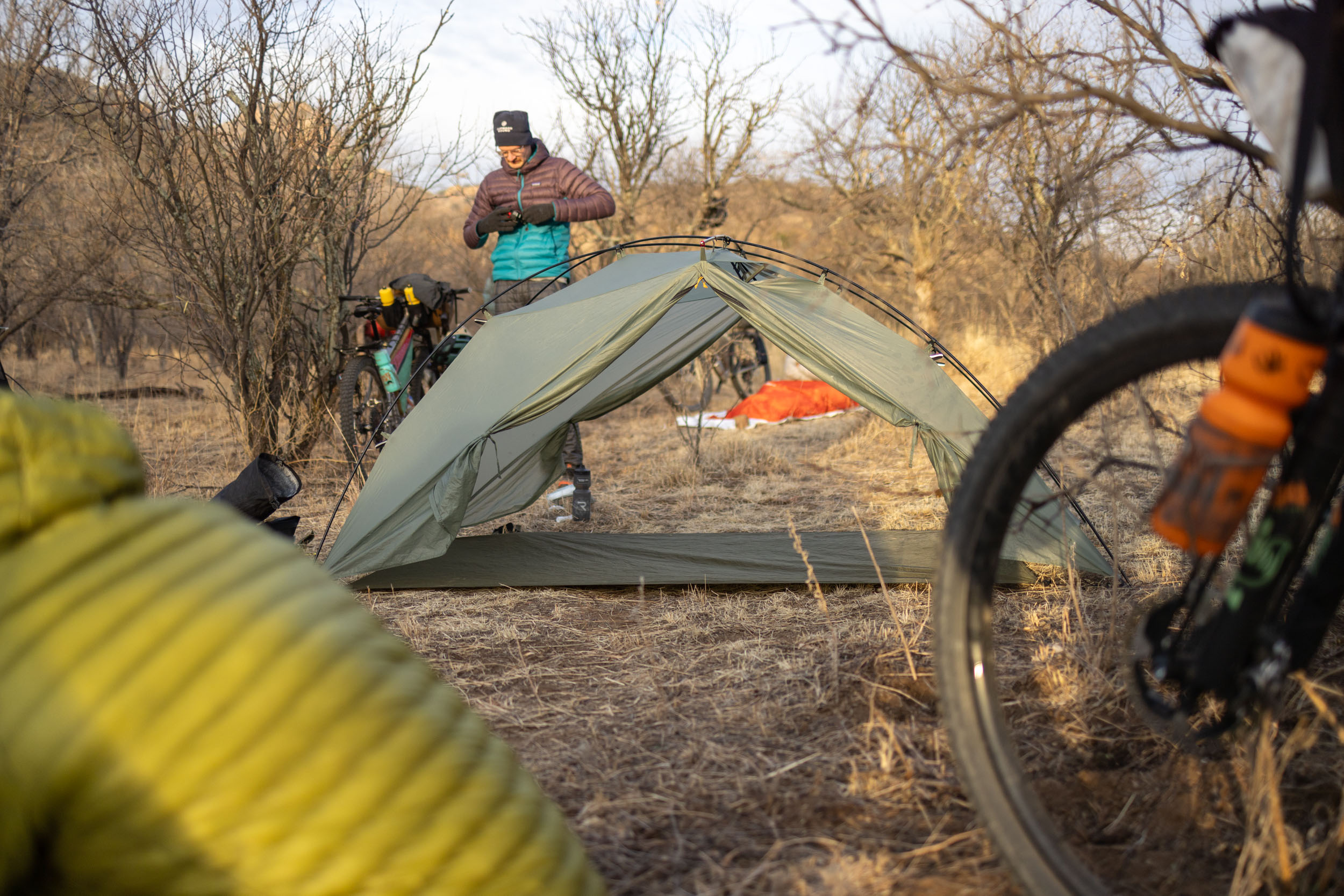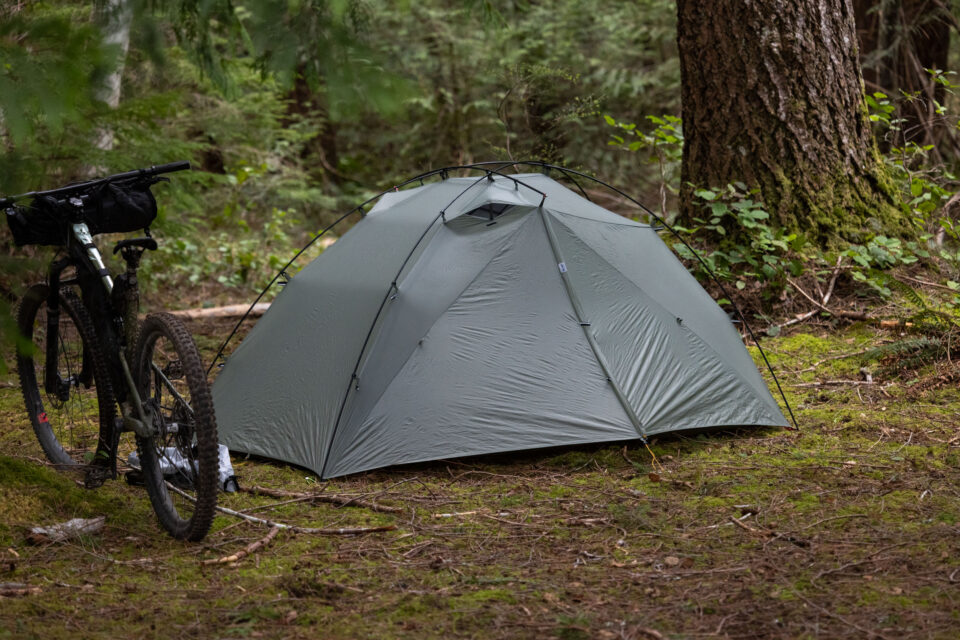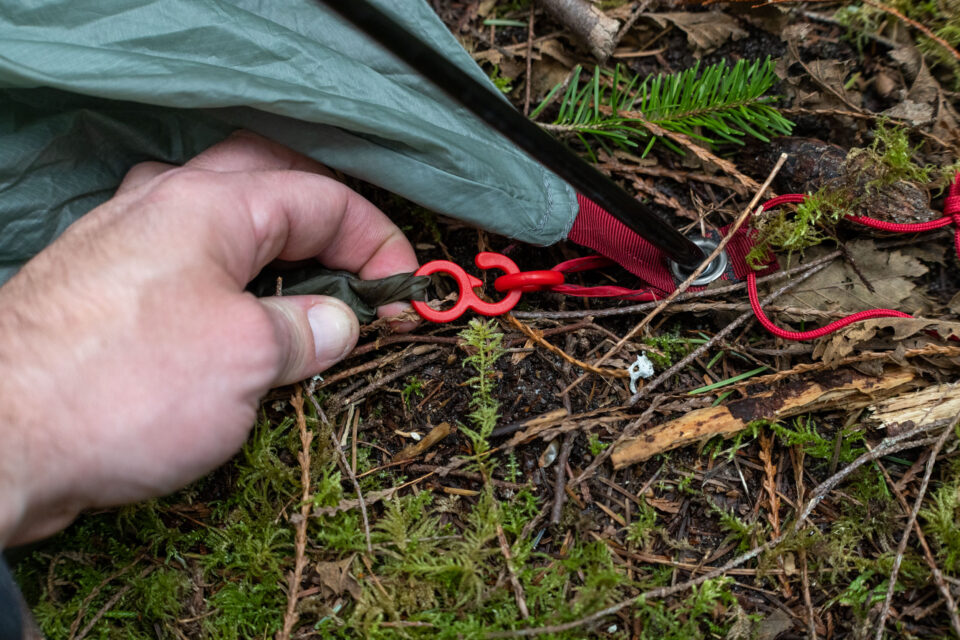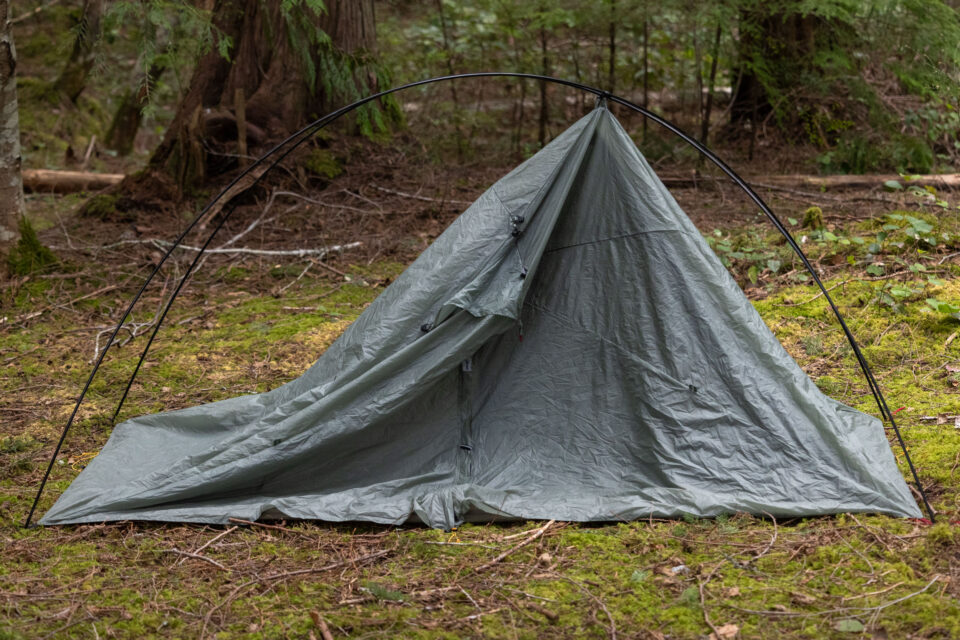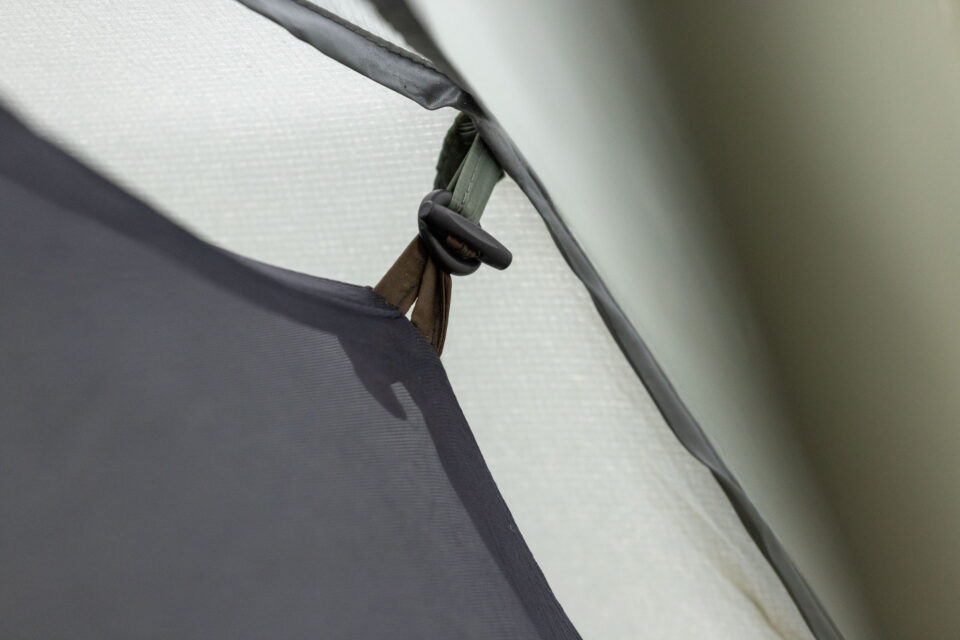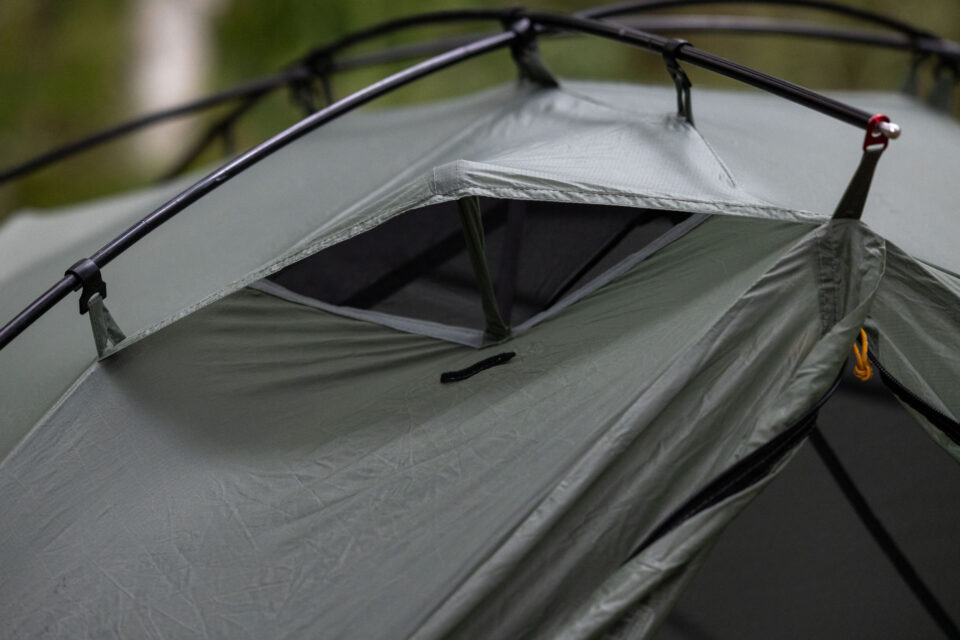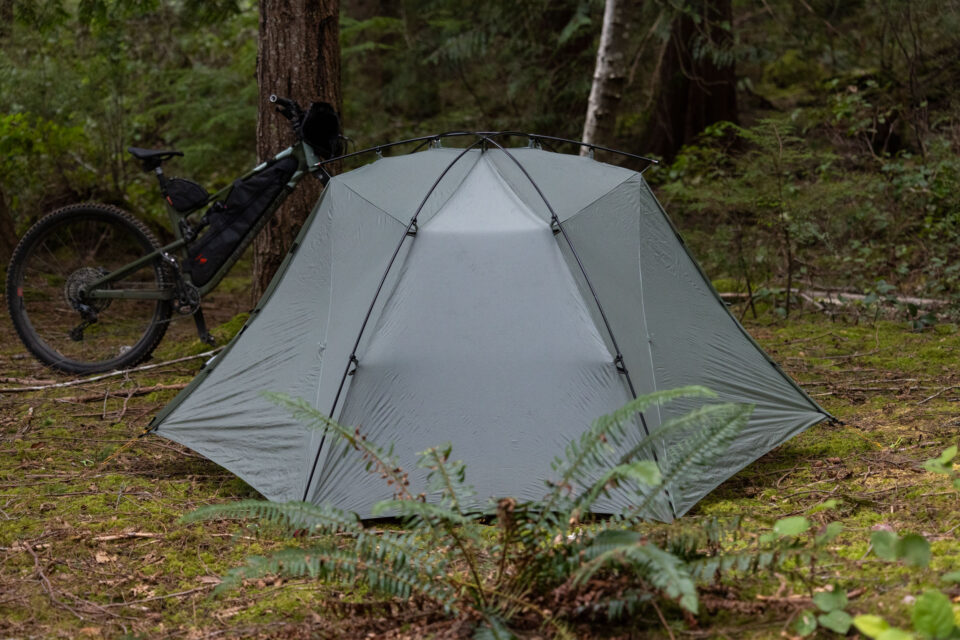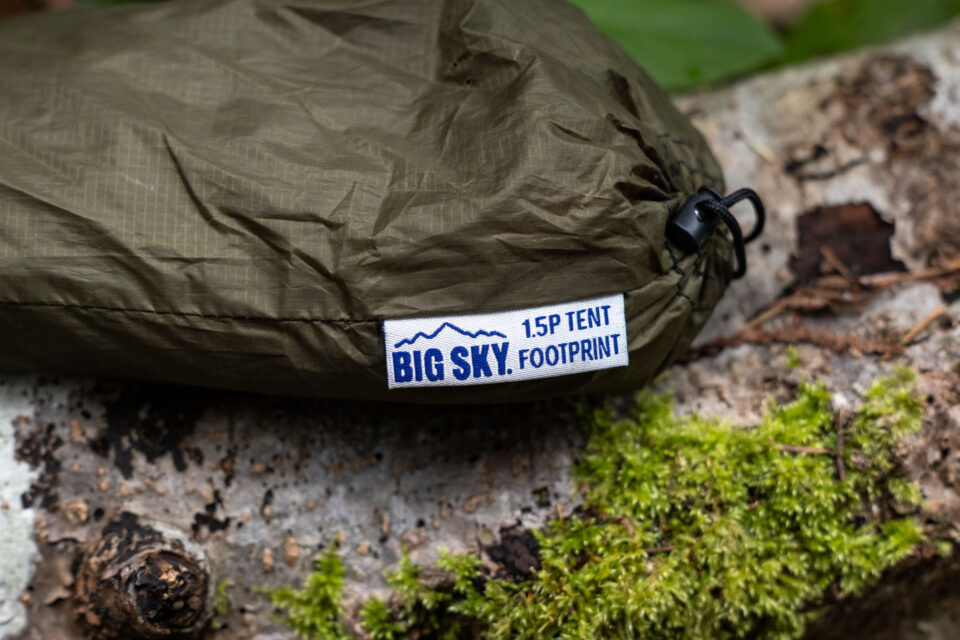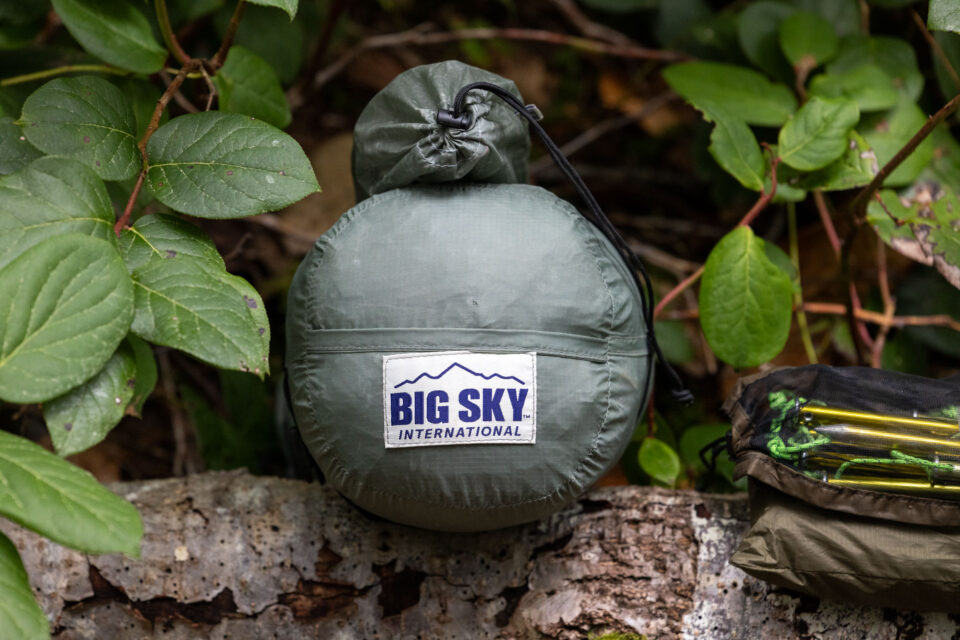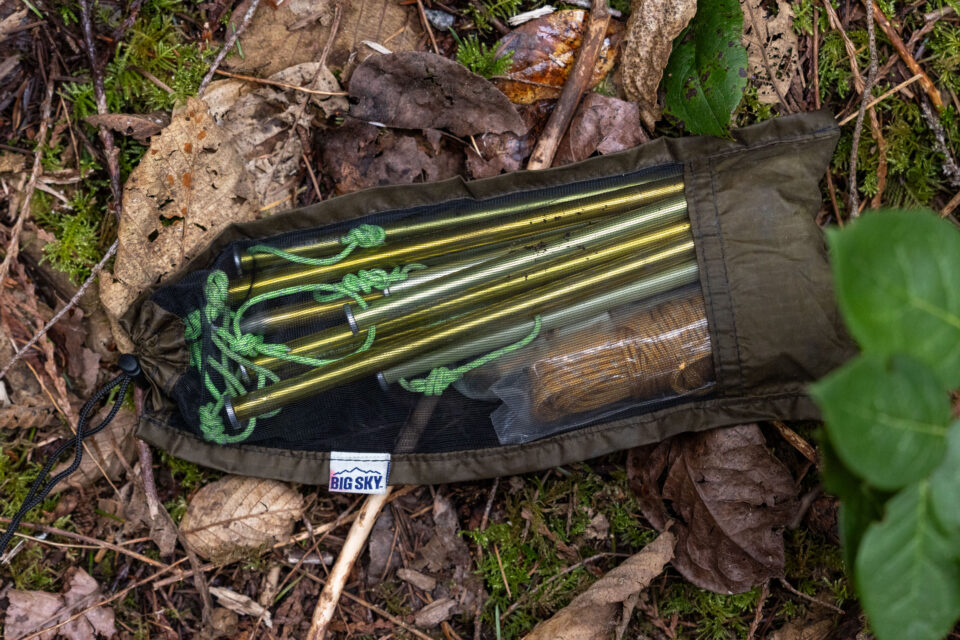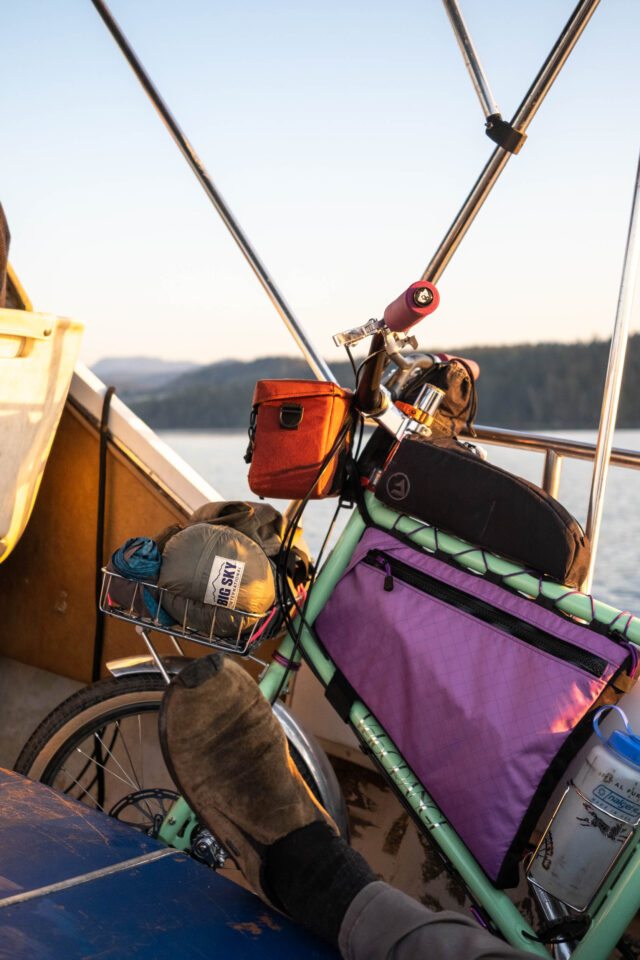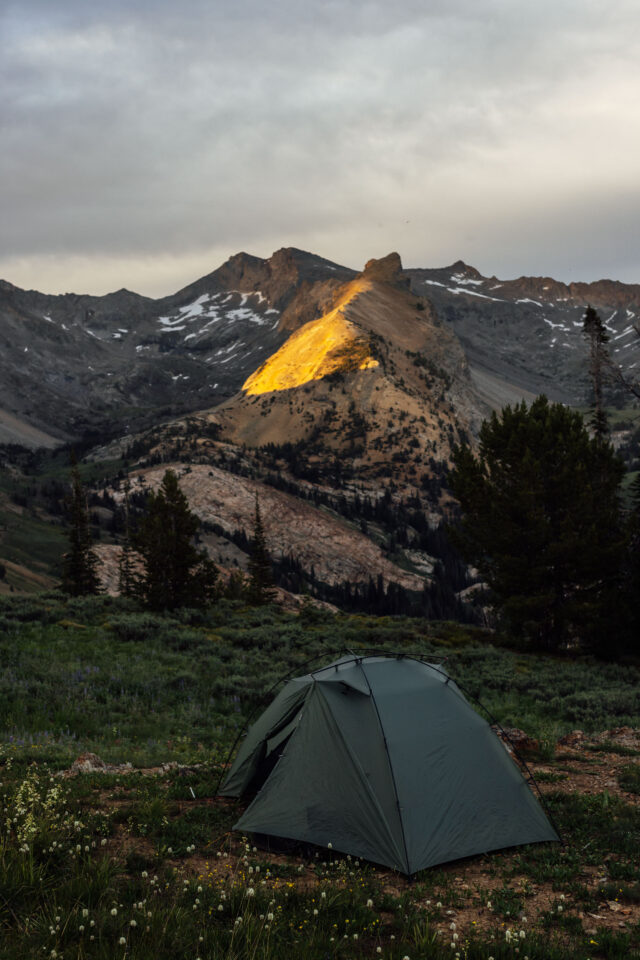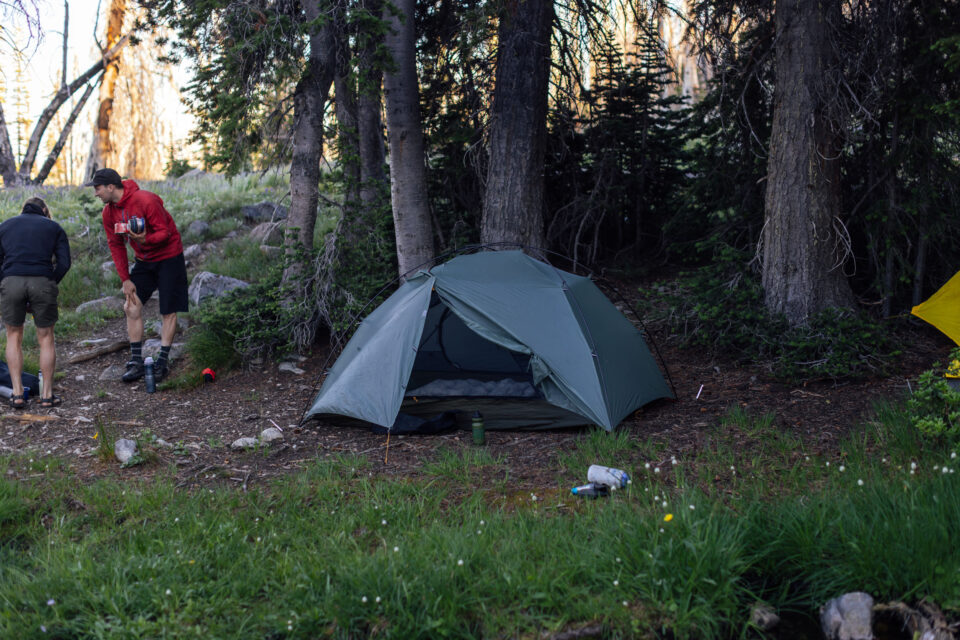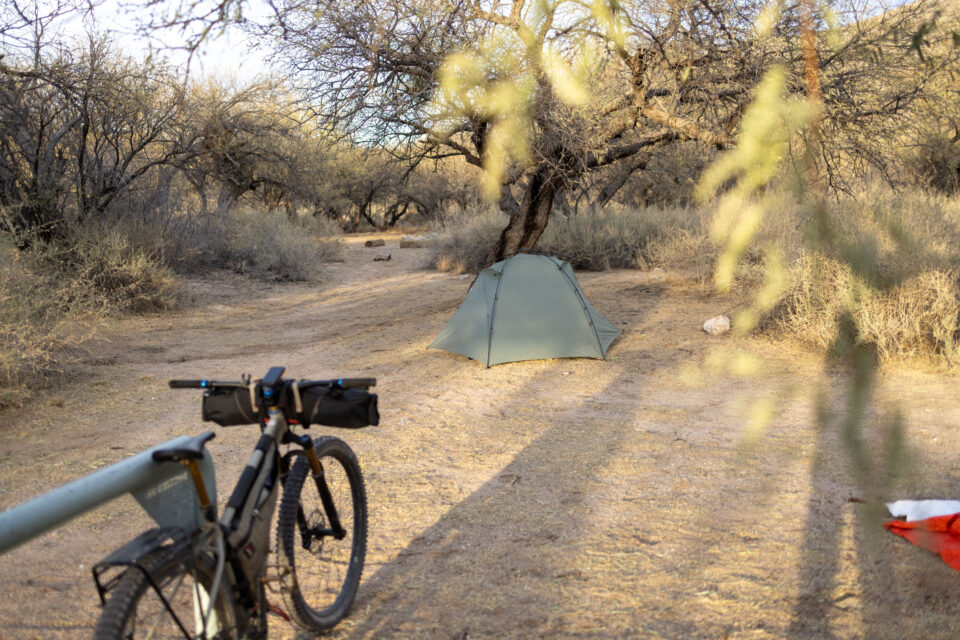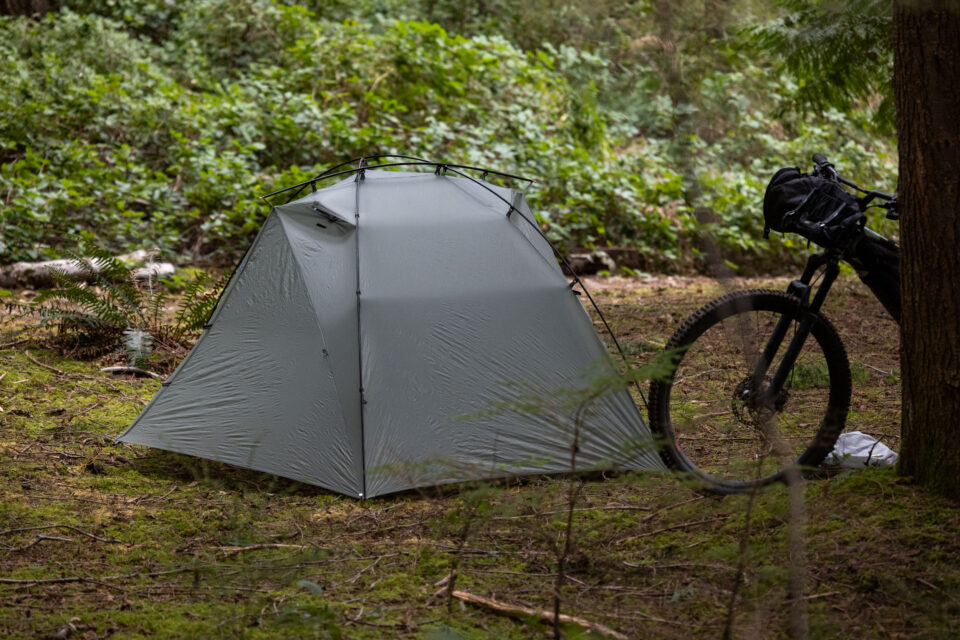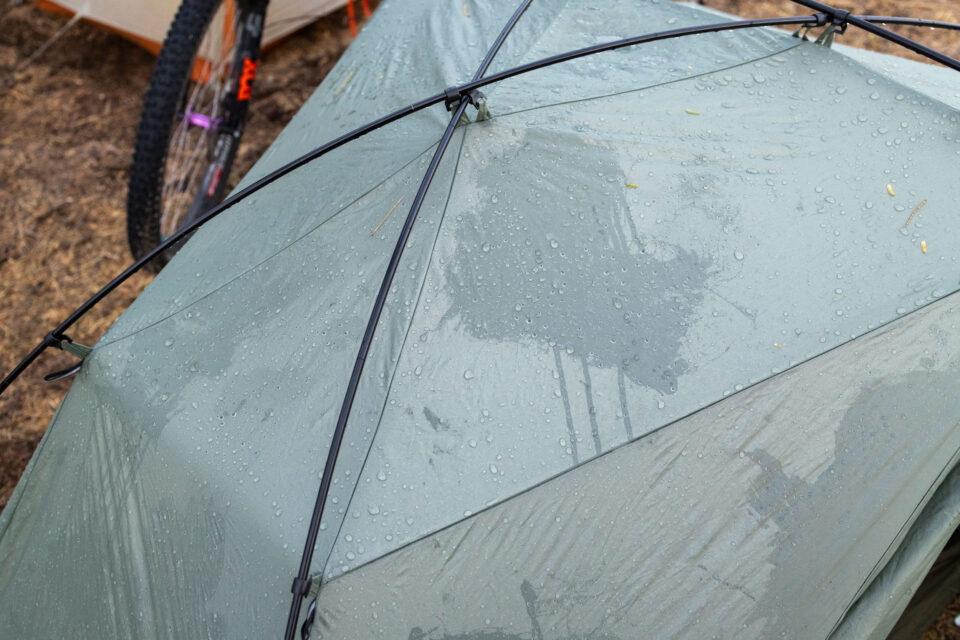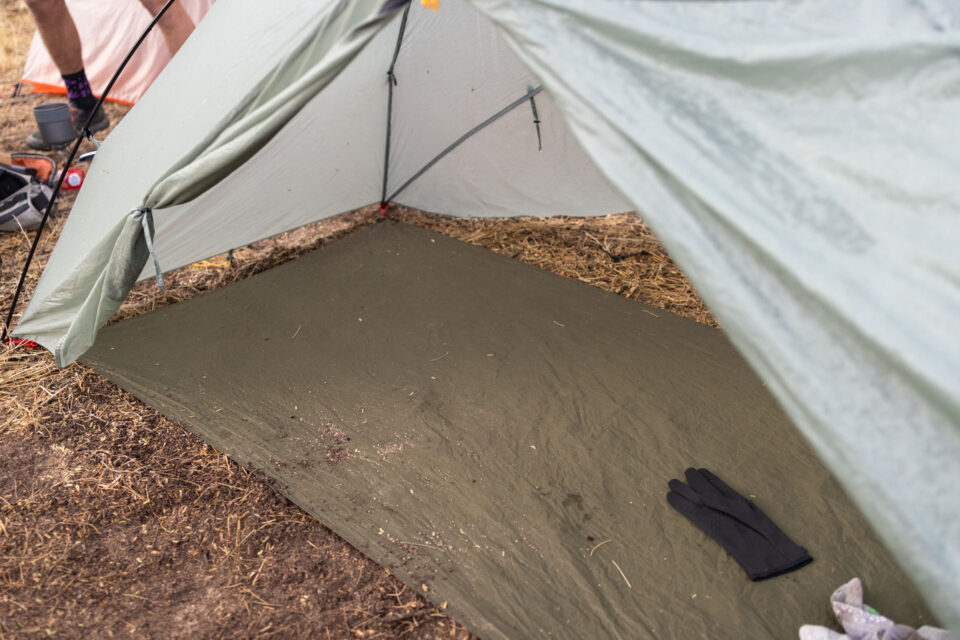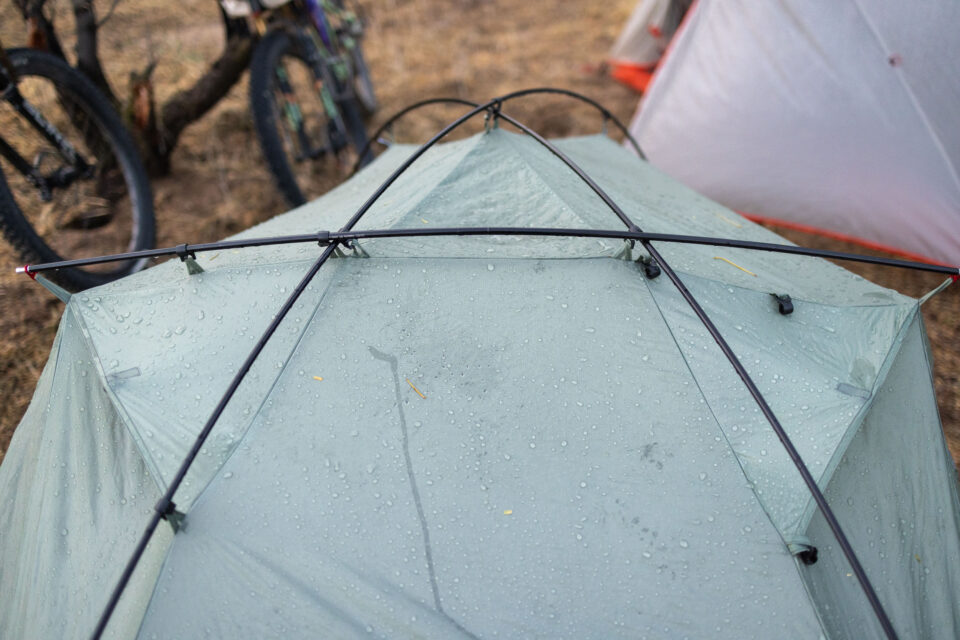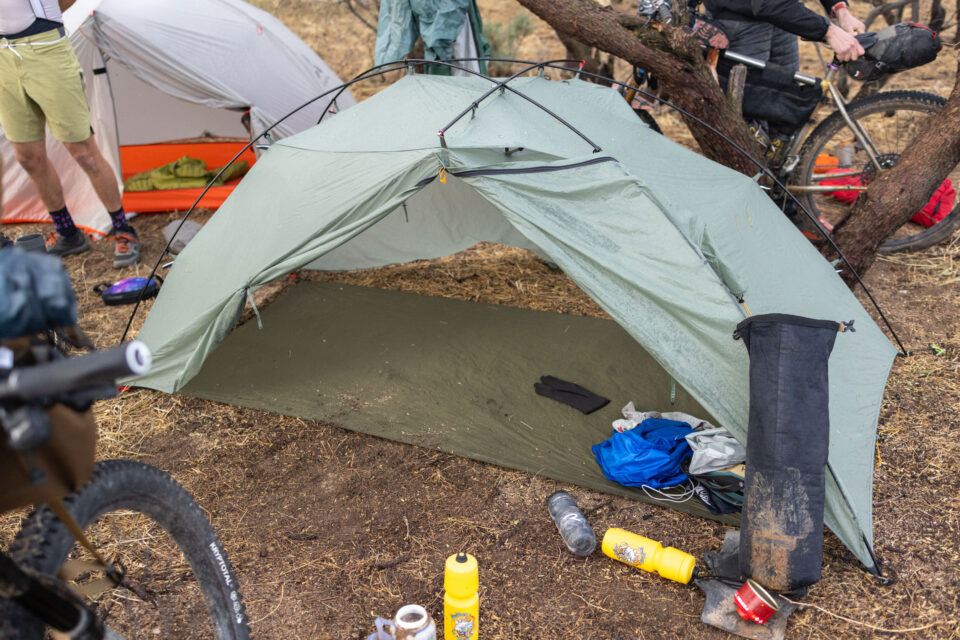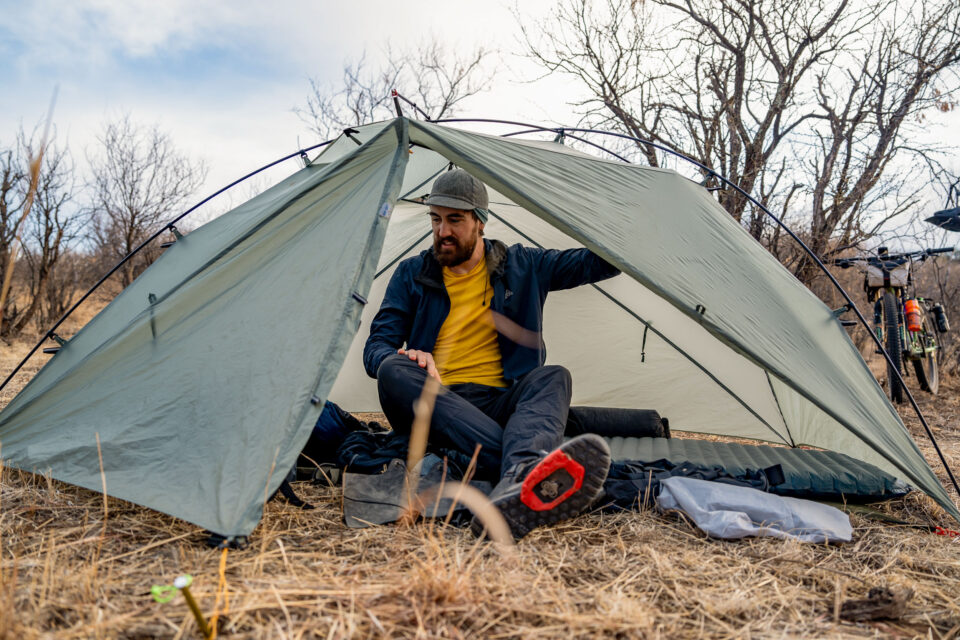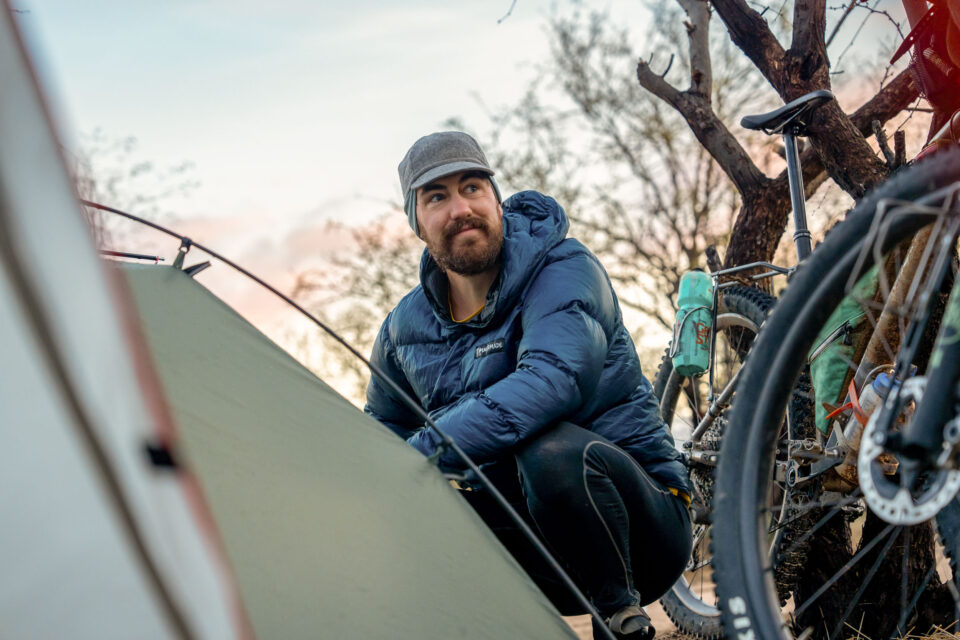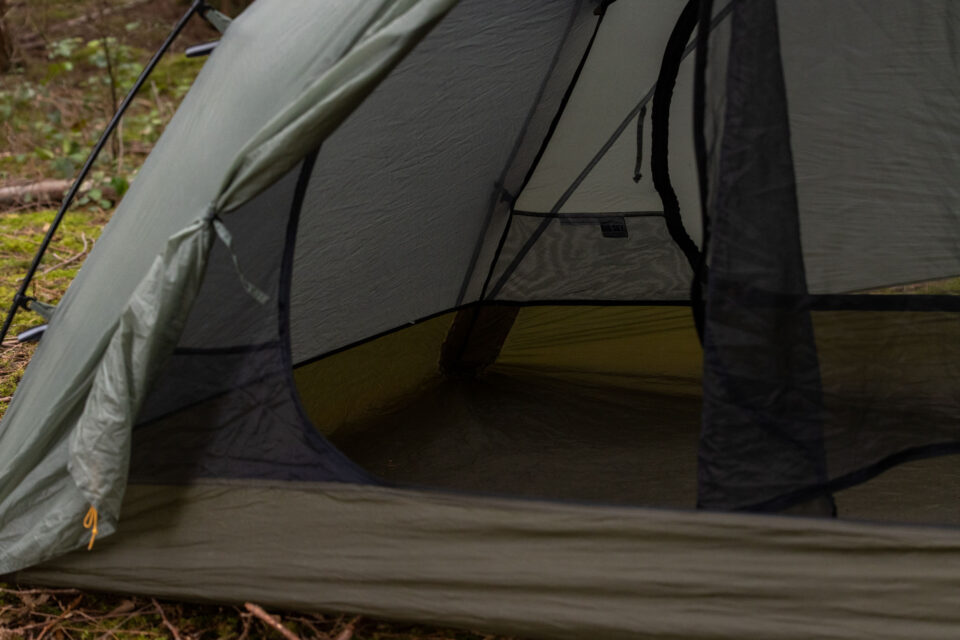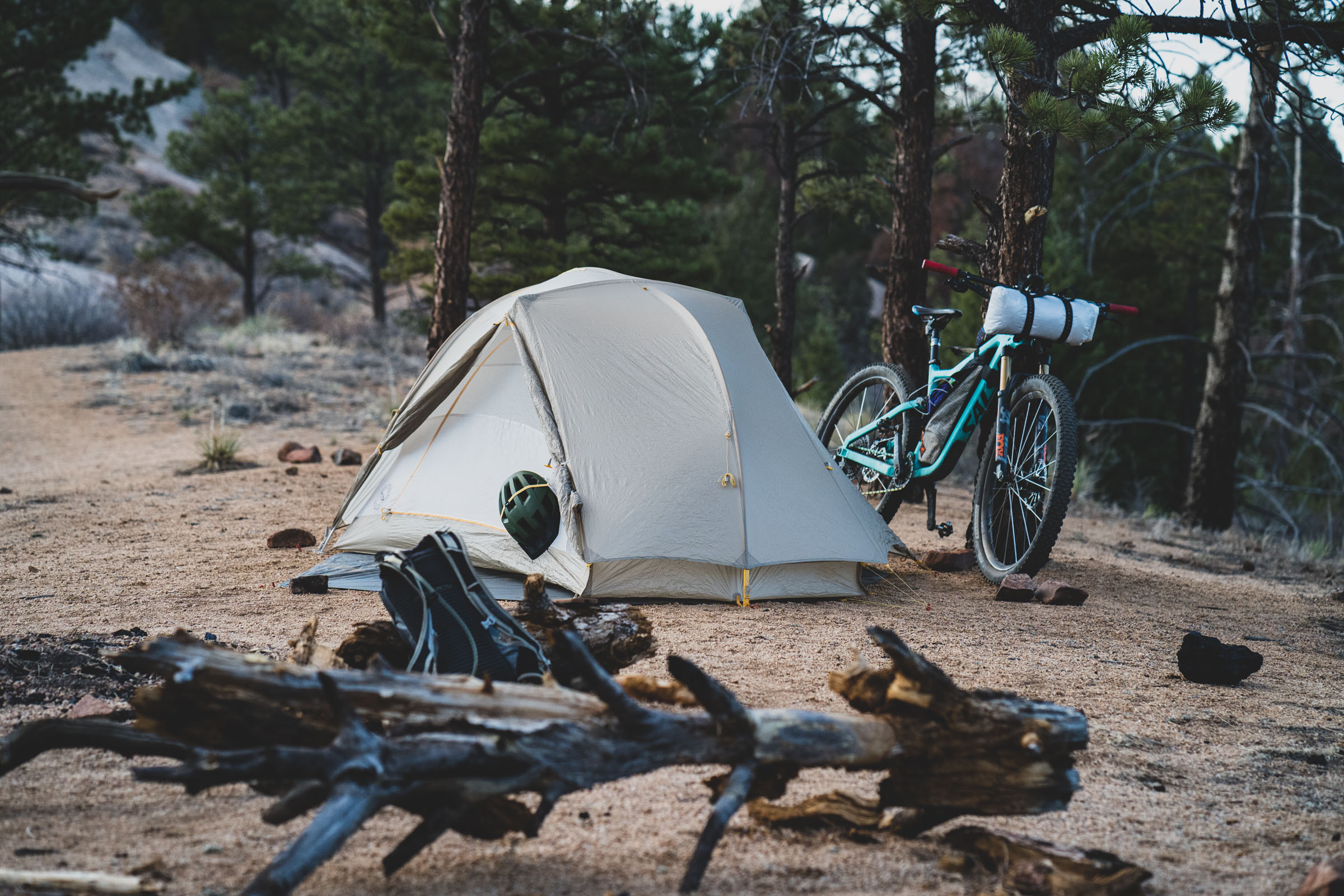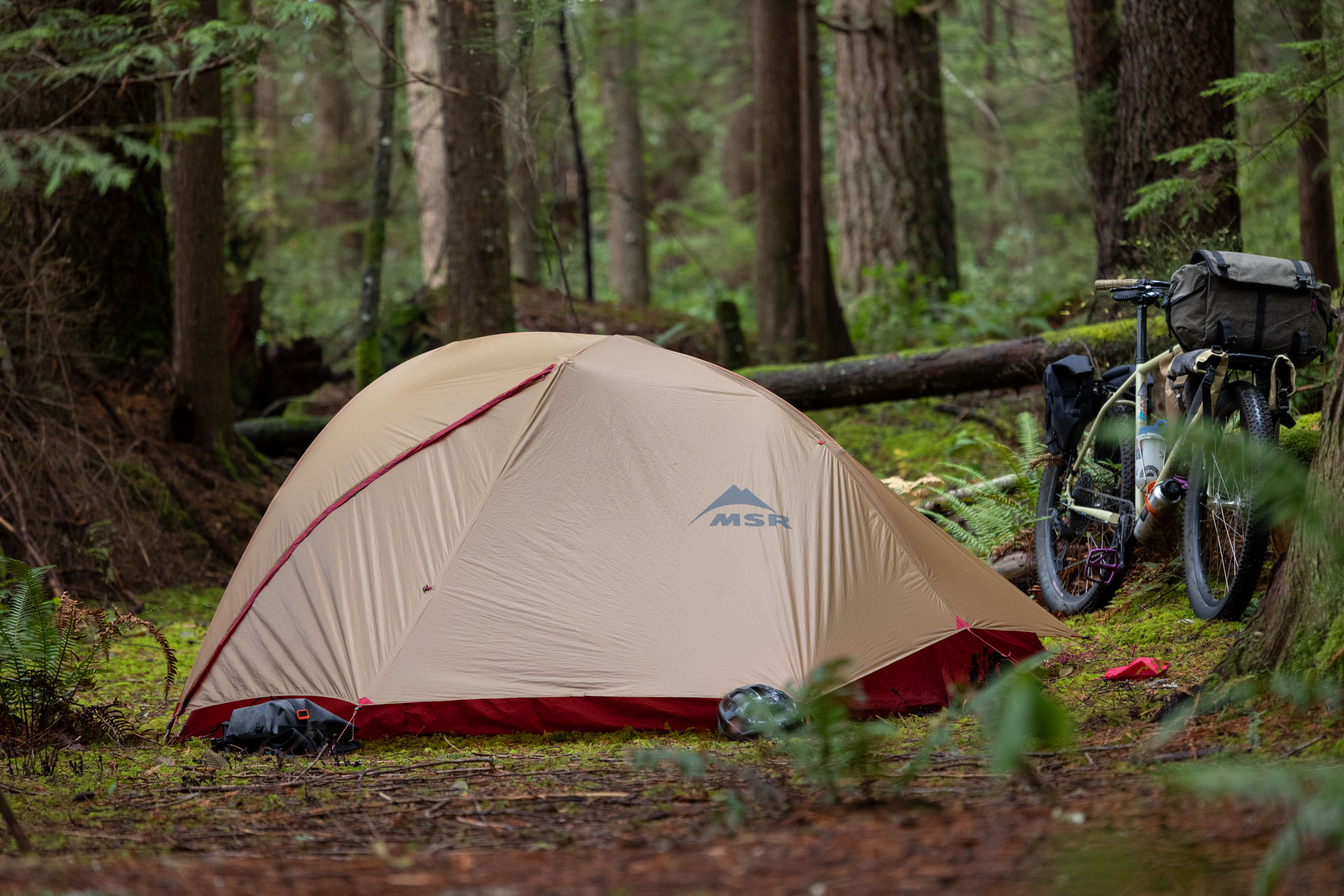Big Sky International Revolution 1.5P Tent Review: Two Years Later
The Big Sky International Revolution 1.5P Tent weighs just over three pounds, has a little more room than a typical one-person tent, and uses an exoskeleton design that’s freestanding and quick to pitch in all types of weather. We’ve been testing the bikepacking version for nearly two years to see how it stands up next to our other favorite tents. Find Miles’ long-term review here…
PUBLISHED Apr 10, 2024
After spending over a year with the Big Sky International Soul 1P Tent and nearly two years with the Revolution 1.5P Tent, I feel confident when describing Big Sky International as one of the most underrated tent brands I know of. Although they’ve transitioned away from US-made gear and now manufacture their tents in Vietnam and China, they’ve managed to improve overall quality, increase distribution with warehouses in the USA, UK, EU, and Asia, and offer competitive pricing. They currently have fifteen 1-2 person tents in their lineup. Almost all of them are freestanding, but each has its own design and construction eccentricities that differentiate it from others in the lineup.
My first experience using Big Sky International’s gear was nearly four years ago when they sent me their Soul 1P Tent. To summarize my review, it ticked a lot of boxes. It had a lightweight double-wall design, it was freestanding, and the bikepacking-specific model came with shorter pole segments for easier packing. I shared far more positives than negatives in my review and it earned a spot in our 2021 Gear of the Year Awards, but it wasn’t exactly perfect. Its steep walls made it less than ideal in windy conditions, and at 6’1” tall, I found the front entrance awkward to get in and out of. I also wish it had just a little more space.

The Big Sky Tent Ecosystem
Before we dig in, it’s best to understand the Big Sky International tent ecosystem. The brand’s tent lineup and website are somewhat difficult to navigate, so it’s hard to quickly understand the differences between models. Names like Revolution and Evolution don’t help. I reached out to the manager at Big Sky, Bob Molen, to break down some of the key differences which should hopefully clear things up.
Across the entire lineup, each size of the tent has the same interior floor dimensions. For example, the Evolution 2P tent has the same floor size as the Revolution 2P tent or Mirage 2P tent. The Evolution and Soul tents are double-wall tents with interior poles, allowing the tent to be pitched with only the inner body when the fly isn’t required. The Revolution, Chinook, and Mirage tents feature an exoskeleton design with the poles on the outside of the fly, allowing the inner and fly to stay attached for quick/dry setup, even in the rain. This also makes them hold up better in stormy and windy conditions compared to the Soul and Evolution series. Chinook models have an optional third pole to create a stronger and more storm-worthy structure. The Mirage has a fixed inner, while the Revolution and Chinook’s inside bodies are removable, allowing users to switch between their breathable fabric or mesh body if desired. The Soul series sets itself apart from the rest with a single front door and vestibule, while the rest of Big Sky’s tents use a side-entry design.
Still confused? Same here. In short, all of Big Sky’s tents aren’t overly heavy, they all offer the features we like to see in lightweight tents, and each is priced comparably to other big-brand shelters. The Chinook is their most foul weather-worthy tent; the Revolution is a slightly roomier and heavier version of the Mirage; the Evolution is less storm-ready with a standard body-poles-fly setup, and the Soul is their lightest and most minimal with a front door, instead of a side entrance. Shortly after publishing my review of the Soul 1P Tent, the folks at Big Sky International suggested the Revolution Tent might be another viable option for bikepackers, built with some of the standout features I liked about the Soul.
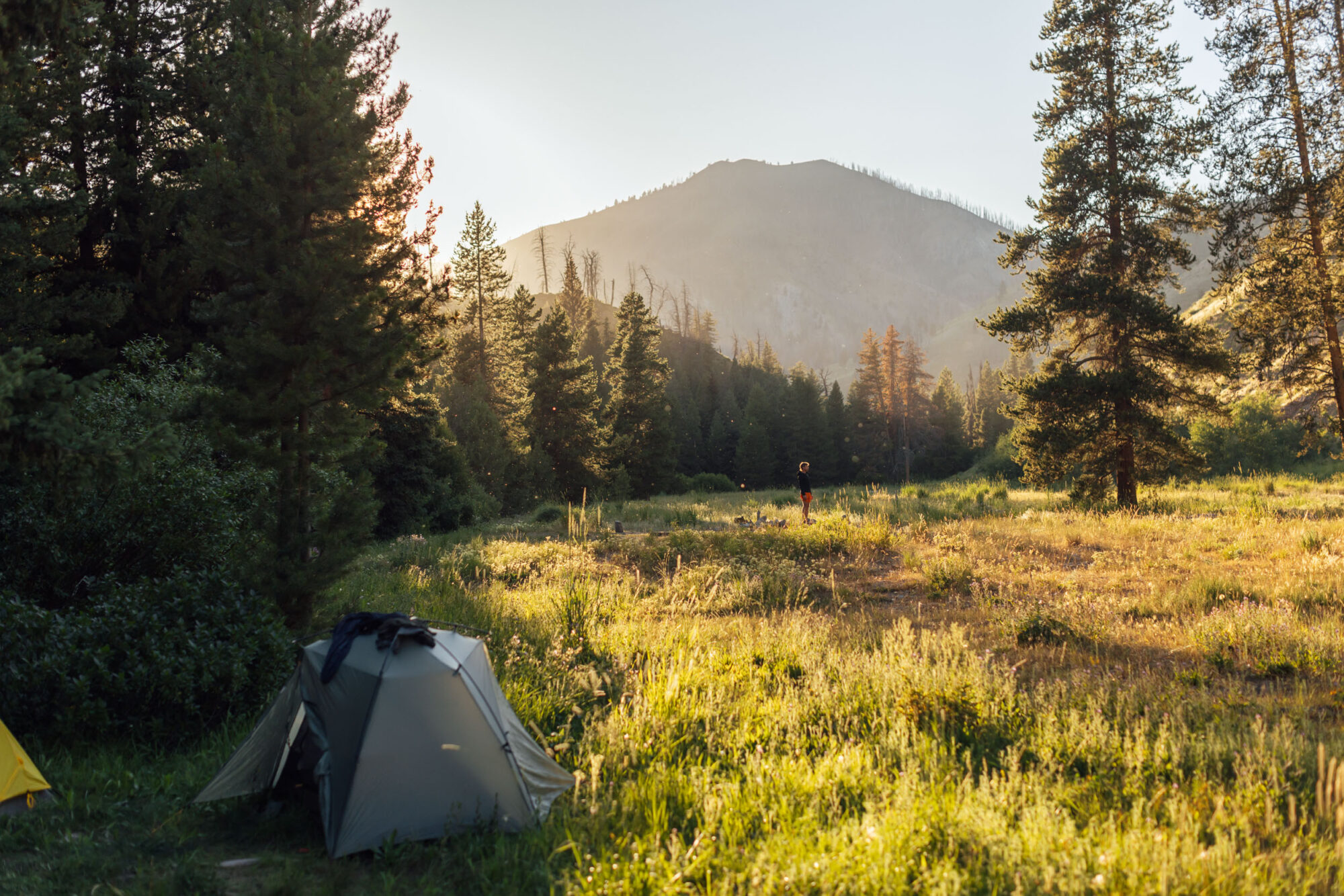
Design, Construction, and Setup
Unlike the Soul, the Big Sky International Revolution tent uses an exoskeleton, exterior-pole design, which allows the fly and body to be pitched together, keeping the inside of the tent dry during set up. It has two side doors and vestibules for easier entrance/exit and more storage space, and the 1.5P version they sent me is significantly wider, although not quite a true two-person tent. They also offer true 1P and 2P models. All three sizes are available in several color options, with your choice of a mesh or breathable nylon inner, and standard DAC poles (14”/36cm segments) or bikepacking poles (11.8”/30cm segments).
I opted for the Revolution 1.5P with a mesh interior and the shorter bikepacking poles to make packing that much easier. It’s interesting that shorter pole segments are only just starting to catch on since small and light bags are nothing new. Having shorter pole segments, even if it’s only by a few inches, often means the difference between fitting in a bag or not. This is especially true with on-bike bags like panniers, frame packs, and handlebar bags. Thankfully brands like Big Agnes, Sea to Summit, MSR, and Big Sky International have risen to the occasion.

The Revolution 1.5P ships with poles, the inner body, and fly. Big Sky doesn’t include a ground sheet or stakes, but there are several options to pick from on the website if you need them. The fly is made from a lightweight 15D Silnylon fabric with silicone coatings on both sides for added strength and water-resistance. There are small vents with integrated struts and velcro tabs at the top of both doorways. The doors are opened/closed using coil-style YKK zippers and two small velcro patches inside the storm flap. Small nylon loops on either side match up with cord locks on the inside of the fly to secure the doors when rolled wide open. The main X-shaped pole attaches directly to the exterior of the fly using a number of plastic hooks and inserts into metal grommets at each corner. A small cross beam pole runs across the main pole structure, lifting both sides of the tent near the top of the doors. The poles themselves are identical and can be set up in any orientation, but the inner body and fly must be set up in the same direction, which is made easy thanks to color-coded black hooks and webbing on one end, and red on the other. The optional footprint has the same red and black corners to eliminate any guesswork.
The inner body of the tent attaches directly to the fly using a number of plastic toggles and corresponding plastic loops. The best way to attach the body to the fly is by matching up the corners, then attaching the top most toggle (denoted by reflective webbing), and then attaching the rest of the toggles. Once it’s attached, there’s no need to disassemble the fly from the body unless packing requires it. This also means the tent can be set up in the rain without getting the mesh body wet, and it’s simply a matter of connecting the poles to the four grommets and securing the exterior pole clips.
Since the Revolution 1.5P Tent is free-standing, it doesn’t necessarily require stakes, but like most tents, ventilation and usable space is improved with a stake at each doorway. Additional stakes at all four corners, as well as the other eight guyline points, are available for windy conditions. The two small guy lines at the bottom of each doorway have cord and tensioners pre-installed, as do the two corners at the wide/head end of the tent to remove any slack. It didn’t take long to figure out how to quickly pitch and make it even and taught, and taking down the tent was equally as simple, even without separating the inner body.

What’s the deal with 1.5-Person Tents?
Big Sky offers 1.5-person versions of the Revolution and Mirage. They both have a 45” width that tapers to 40” towards the foot-end. The Chinook is offered in a 1-Plus version that uses the same fly/pole as the 1P model but with a larger inner body that maxes out at 65” wide in the middle. Otherwise, it turns out 1.5-person tents aren’t that common, so where do they fit in? Most 2-person tents are around 50” wide, while 1-person tents can be as narrow as 30”. So, Big Sky’s 1.5-person offerings are somewhat of an outlier, offering extra room for a wide sleeping pad or just enough room to squeeze in two regular width pads when sharing with a close friend. While I admit I had no intention of sharing the Revolution 1.5P with anyone else, it’s nice to know that it could serve as a cozy 2-person tent when needed.
As a 1-person tent, I found the Revolution 1.5P to be delightfully spacious. I spent my fair share of nights huddled inside during storms, including a particularly memorable evening during our Madrean Rugged Ramble ride this past winter. Having a few inches of extra width on either side meant a better chance at keeping my gear dry. Despite the added width, it’s only 84” (7’) long on the inside, which is a hair shorter than most freestanding tents. At 6’1” tall, I never found the length frustrating, but I think I’d prefer to have a few extra inches at my feet/head if I was planning on anything longer than a week.
The Revolution 1.5P is 39″ (100cm) tall at the highest point inside the tent, which provided just enough room for me to sit up and change clothing. All in all it’s a fairly minimal tent, with a few features such as mesh pockets at each corner of the inner, which are great for stashing headlamps and other small items.
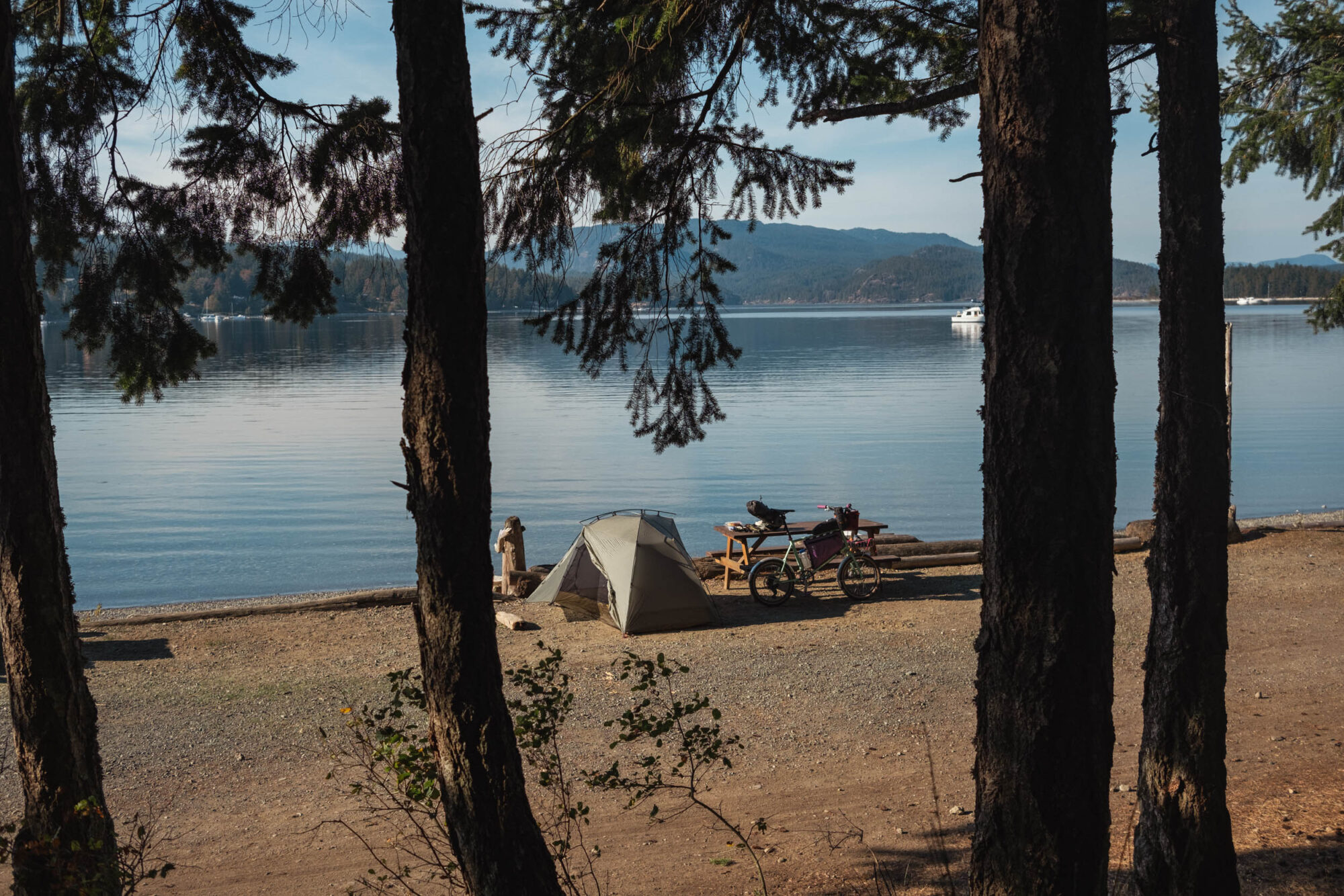
With that said, there are a number of true 2-person, freestanding or semi-freestanding tents available that weigh the same or even less than the Revolution 1.5P, which makes it seem a little less compelling. For example, the Big Agnes Copper Spur HV UL2 is freestanding, weighs only 20 grams more than the Revolution, and has a max width of 52” at the head-end. However, it costs $180 more. The Big Agnes Fly Creek HV UL2 is semi-freestanding, 52” wide, weighs almost a full pound less than the Revolution 1.5P, and costs just $50 more. Still, if you want the shorter pole segments of the Fly Creek Bikepack Tent, tack an additional $100 onto the bottom line. Big Sky International seems to have the edge when it comes to cost and bikepacking-friendly poles.
In the Rain and Wind
Unlike the Soul, which was awkward to enter in foul weather, the Revolution’s doors overhang the entrance/inner area of the tent and reduce the chance of water getting inside. That said, the flat area at the top of the fly sometimes collected water in heavy downpours. I didn’t have any issues with it, but be aware that it has the potential to sag with prolonged water exposure as nylon can absorb water, unlike polyester or Dyneema Composite fabrics.
It’s best to orient the foot end of the tent towards the wind, as it tapers less dramatically towards the peak compared to the head end. Unlike the sail-esque walls of the Soul, which do an outstanding job at catching the wind, the Revolution’s walls are slanted enough that I never had any issues with stability in the wind. However, it has large exterior panels, so keeping the wind direction in mind and taking advantage of the extra guyline points is crucial when any type of inclement weather is expected.
Morning condensation wasn’t uncommon during a handful of stormy nights spent inside the Revolution tent. This was with the doors zipped shut, multiple stakes deployed, and the two vents opened. I wouldn’t say air circulation was an issue with the Revolution 1.5P tent, but it’s also not the breeziest tent I’ve used. On one particularly turbulent night, I was forced to boil some water just outside my vestibule with the door slightly unzipped. The steam found its way inside my tent—my fault, not the tent’s—and the roof of the tent stayed wet throughout the night, even after the weather improved. As with most tents, it’s best to keep the doors cracked when possible, especially in humid or wet conditions. At the very least, both doors should be staked to improve ventilation. I also noticed that both ends of the fly sit very close to the ground, not leaving much room for air flow, and because they clip directly into the poles the gap isn’t adjustable.
Fly-Only with the Revolution
Taking advantage of the Revolution’s exoskeleton pole structure to ditch the inner body ended up being one of my favorite features. I’m not one to normally leave my mesh inner at home, as I prefer not to share my night with crawling critters, but a winter bikepacking trip in Arizona with cold nighttime temps was all it took to convince me otherwise. The setup doesn’t change since the poles attach to the outside of the fly, so there was no real learning curve beyond being a little extra careful to keep my sleeping pad and bag on the footprint. My only real gripe is that the matching 1.5P footprint from Big Sky felt a little small when pitched in fly-only mode. It would be nice to see an optional footprint that extends into the vestibule area and is longer. As you can see in a few of these photos, there was a lot of dirt kicked onto the footprint, and on a long trip that would start to get annoying.
The real benefit of running the Revolution in fly-only mode is that you get to leave the tent body at home, saving just over 400 grams (0.9lb). This allows for a sub-three-pound complete setup with the footprint, fly, and poles. Herein lies the problem with a 1.5-person tent. It’s heavy for a one-person tent, but in reality, it’s still just a one-person tent. It’s not hard to find a true two-person tent that weighs less and has short poles for bikepacking, but most cost at least $100 more than the Revolution. Big Sky International continuously offers some of the best-value shelters out there, and the same can be said for the Revolution.
Since I received my tent, Big Sky updated the design in 2023 with a few small changes. The standard metal grommets at each corner have been swapped out for custom aluminum fittings, the guy line material has been switched, and perhaps most notable is the addition of a breathable nylon fabric between the mesh and the bathtub floor of the inner body.
Pros
- Shorter poles of the bikepacking model make it easier to pack
- Color-coded webbing and symmetrical poles make setup easy
- Fly-only setup is nice in the right conditions
- Spactious 1.5P size, awnings, and exoskeleton pole structure make a good shelter during long storms
- Competitively priced
Cons
- Heavy for a roomy one-person tent
- Aluminum bikepacking poles are heavy
- 1.5P footprint feels small without inner body installed
- Attaching the inner body to fly is a little awkward, but it can be left on
- Condensation build-up is sometimes an issue in humid/moist conditions
- Weight (claimed): 3.1lb (1406 grams)
- Weight (actual): 3lb (1390 grams)
- Weight (body + fly + stuff sack): 2lb (910 grams)
- Weight (fly): 1lb (475 grams)
- Weight (poles): 1.1lb (480 grams)
- Weight (footprint): 123 grams
- Weight (six stakes + guyline): 120 grams
- Floor Dimensions: 84 x 45/40″ (213cm x 115/102cm)
- Place of Manufacture: South Korea
- Price: $349 USD
- Manufacturer’s Details: BigSkyInternational.com
Wrap Up
Tents are getting better and better these days, but they’re also getting more and more expensive. Just last week we shared a $900 freestanding Dyneema Composite shelter that weighs under two pounds with just about the same interior dimensions as the Big Sky tent I tested here. At $349, I think the Big Sky Revolution 1.5P Tent is a good deal, but frankly, after two years of use and countless nights outside, I wish it was a proper two-person tent. It feels heavy as a one-person tent compared to what’s currently available, and it misses the mark as a dedicated two-person tent. Even though I struggled with the front entrance on the lighter-weight Soul 1P tent, it was difficult for me to leave it at home, knowing I needed to log some time with the Revolution. Of course, the exoskeleton design, fly-only option, and short bikepacking poles are fantastic features for bikepackers, and the Revolution holds up better in wind and rain compared to the Soul.
Now that I’m properly educated about Big Sky’s lineup, I’d consider the Mirage 2P tent if I was in need of a dedicated two-person tent. It weighs less than the Revolution 1.5P and is longer, wider, and taller. The same can be said for the Mirage 1P tent, which looks like a great option for a no-fuss freestanding, side-entry tent, as long as you’re not too worried about not having the ability to pitch it fly-only. With that said, the Revolution offers more head space thanks to the cross beam pole and has a few other key features that some folks will appreciate. If you travel alone, want some extra space inside your tent, and appreciate the exoskeleton structure or fly-only option, then the Big Sky Revolution 1.5P tent should be high on your list.
Further Reading
Make sure to dig into these related articles for more info...
Please keep the conversation civil, constructive, and inclusive, or your comment will be removed.







